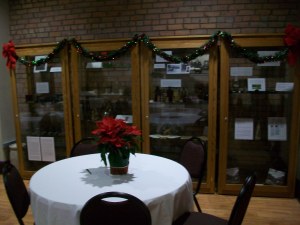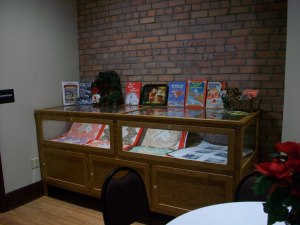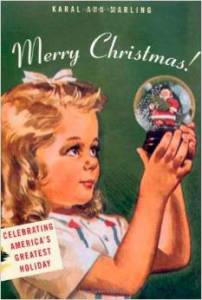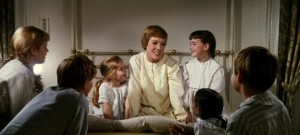Last summer I did a post about bois d’arc and horse apples and included some ideas for craft projects involving the fruit. Well, I actually made an attempt to use some horse apple slices in a crafty way for Christmas.
The idea: Use horse apple slices as Christmas ornaments.
After my summer post, I had several people bring me horse apples. In a few weeks my bounty began to overtake the fridge here at the museum. As Thanksgiving approached (and I noticed some of the apples were rotting inside their plastic bags) I realized I needed to clear them out of there. Most of them made their way to my compost bin, but I saved a few of the better looking ones to play with.
I had read (and written) that horse apples are messy, sticky, and generally difficult to cut. Did I heed these warnings? I did not. I simply got out my glass cutting board and my sharpest kitchen knife and got to it. The first cut was easy, and I wondered what all the complaining was about. By the 6th cut my board was covered in milky sap and I struggled to get the knife all the way through the fruit. It was amazing how quickly things got sticky.
Some slices were too thin, some too thick. Some started thick and somehow ended thin. I obviously needed more practice with this and had plenty more apples to spare. But as I tried to clean off my knife and realized dish soap didn’t really help, I knew this would be my first and last sliced horse apple for this test project.
There are two ways to dry the slices. One can leave them on a baking pan in the oven on low for several hours. Or one can do as I did and leave them on a baking pan in a spare bedroom for several weeks. They take a long time to dry. The thicker pieces never really did dry and turned into a dark soft mess. The thin ones half-stuck to the pan and broke when I tried to peel them off. I was left with two decent-looking usable horse apple slices.
I could have strung them with wire and hung them on my small fiber optic tree as intended, but it seemed a little silly with only two. I just lay them on and around the tree instead.
The result:
What I learned:
1. Horse apple slices CAN be pretty decorations for fall and winter projects! They’re not entirely useless!
2. When cutting the apples, work quickly. Once the milk is exposed and starts to dry things get tricky.
3. The optimum thickness for a slice is approx. 1/8 inch.
4. Wear gloves. I mentioned this in the previous post but I didn’t do it. Latex or dishwasing gloves, even gardening gloves. Not necessarily helpful in the cutting but definitely in the aftermath. Trying to clean up sticky when your hands are sticky isn’t fun. I half expected Desi Arnaz to walk in as I stuck to things then got those things stuck to other things.
I think this is a good project. The slices look nice enough and would complement a tree with a “natural” theme like pine cones, berries, or small woodland creatures. With a few tweaks I could make it work next Christmas.
Maybe.
Kendall
Did you undertake any Christmas crafts this year? Anyone still have horse apples and looking for something to do with them? Post a comment on our facebook page.


![100_3537[1]](https://historicforney.org/spellmanmuseum/wp-content/uploads/2015/01/100_35371-225x300.jpg)
![100_3540[1]](https://historicforney.org/spellmanmuseum/wp-content/uploads/2015/01/100_35401-300x225.jpg)






